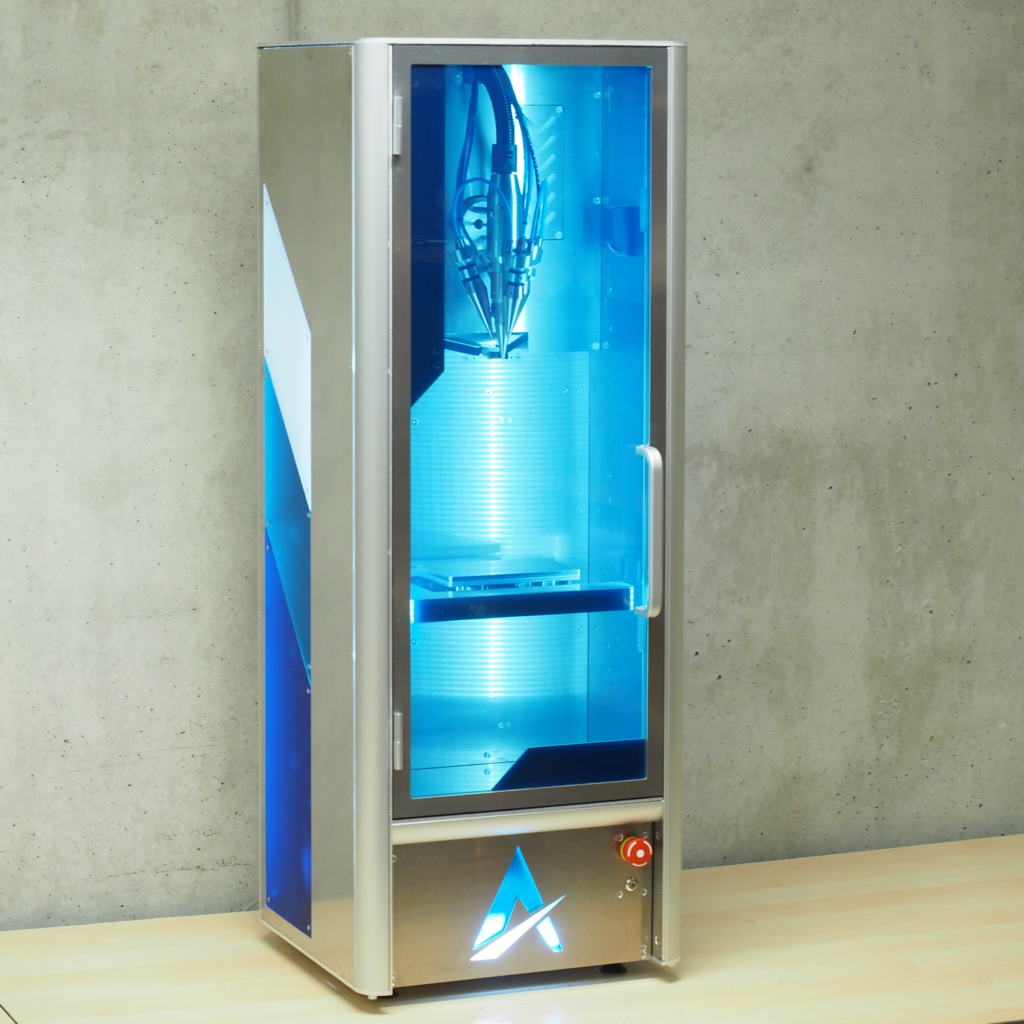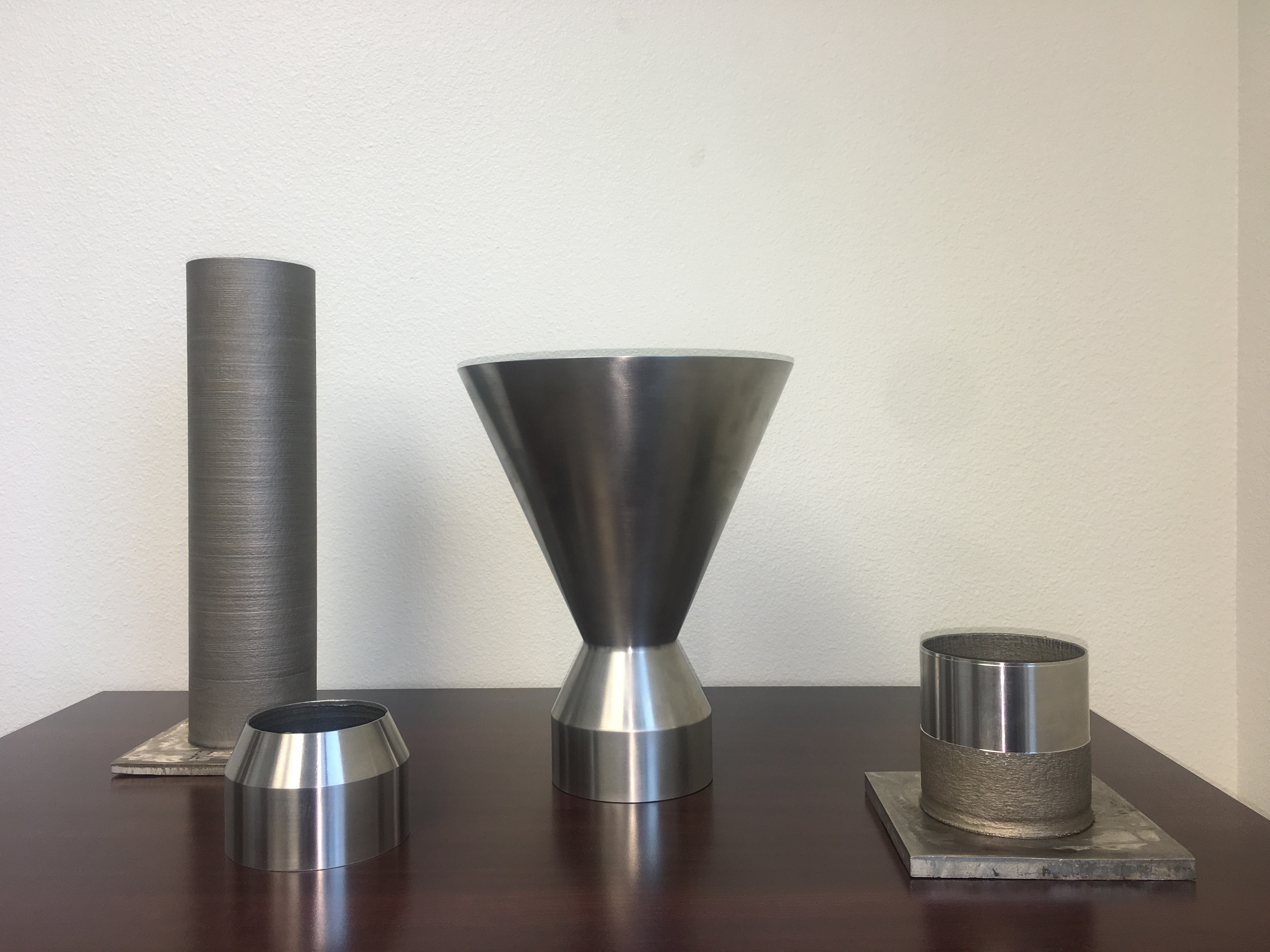Additec provides Directed Energy Deposition 3D printing through the μPrinter, a desktop system that produces metallic parts from both, wire and powder feedstock using LMD-WP (Laser Metal Deposition-Wire Powder) Process.

Additec, a company based in Germany and Las Vegas, has launched a new Desktop metal 3D printer: the μPrinter. In order to enable people to get access to reliable technology at affordable cost, the company designed a laser wire and powder deposition head.
Indeed, according to the company, processing wire would enable the user to save money spent on material while benefiting from a wide range of materials. Furthermore, with a build envelope of 120x160x450mm (XYZ), closed loop process control requires the use of modern direct diode lasers as energy source and is equipped with a controlled atmosphere enclosure
“Process stability was the most important aspect for the development of the μPrinter. Because wire based coaxial deposition is not as common as powder LMD, we developed our own process control structure, that not only adjusts the processing parameters on the fly, but also measures the height of the individual layers, and adjusts nozzle to part distance automatically. Furthermore, this gives users maximum flexibility, as all process parameters can be set in g-code. To easily change parameters for certain sections of a build, a macro utility is provided.”

Moreover, the company ensure a very good print quality is very high, both in wire and powder mode. The printer can be controlled either via a locally hosted web interface, or through USB.
The μPrinter is the flagship product of the company. It is available starting at 90 000 USD.
For further information, follow us on our social media and subscribe to our newsletter! Images via Additec
Would you like to be featured in the next issue of our digital magazine? Send us an email at contact@3dadept.com





